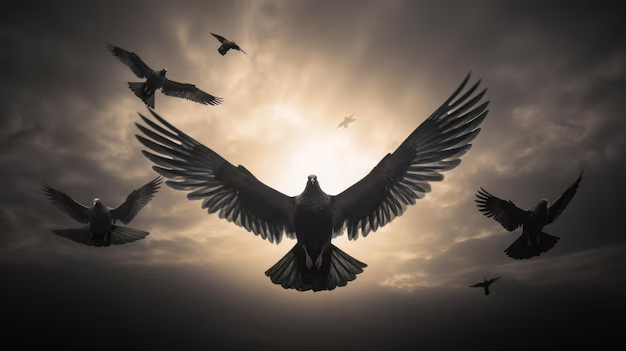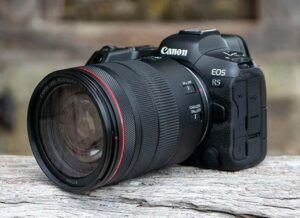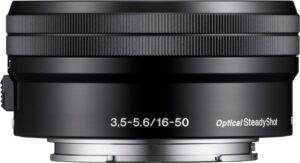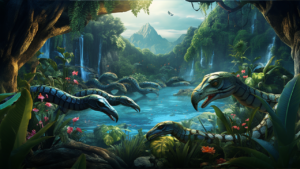Tips for Photographing Hancock Birds in the Wild

Tips for Photographing Hancock Birds in the Wild
Hancock birds are a captivating group, known for their stunning colors and unique behaviors. Whether you’re an experienced birdwatcher or just starting your photography journey, capturing these magnificent creatures in the wild can be both challenging and rewarding. With the right knowledge and techniques, you can create breathtaking images that showcase their beauty.
Imagine standing quietly in a serene woodland, camera ready, as vibrant plumage flits among the branches. The thrill of spotting Hancock birds adds to the excitement of photography. But to truly capture their essence requires more than luck; it demands understanding and skill.
Join us as we explore essential tips for photographing Hancock birds in their natural habitats—turning fleeting moments into lasting memories through your lens. Get ready to elevate your bird photography game!
Understanding their behavior and habitats
Hancock birds exhibit fascinating behaviors that reflect their adaptability. Observing them in the wild reveals their unique territorial displays and social interactions. Many species are known for their elaborate courtship rituals, which can be a delight to witness.
Their habitats vary widely. Some thrive in dense forests, while others prefer open grasslands or wetlands. Understanding where they live is key to spotting them easily.
These birds often build nests close to water sources or within tree branches, making these areas prime locations for photography. Early mornings and late afternoons tend to be the most active times when you’re likely to see feeding and flying behaviors.
Always approach with patience; sudden movements can scare them away quickly. By learning about their routines, you’ll increase your chances of capturing compelling images that showcase their natural beauty in stunning detail.
Necessary equipment for bird photography
Selecting the right gear is crucial for capturing stunning images of Hancock birds. A quality DSLR or mirrorless camera should be at the top of your list. These types of cameras provide flexibility and superior image quality.
Investing in a long lens, ideally between 300mm to 600mm, allows you to zoom in on distant subjects without disturbing them. The greater the focal length, the closer you’ll appear to these beautiful creatures.
A sturdy tripod or monopod can stabilize your shots, especially in low-light conditions where every shake counts. Don’t forget extra batteries and memory cards; bird photography often requires patience as you wait for that perfect moment.
Consider using camouflage clothing or blinds to blend into nature. This helps minimize disturbances while allowing you to observe Hancock birds in their natural habitat more closely.
Tips for capturing the perfect shot
To capture the perfect shot of Hancock birds, patience is your best ally. These creatures often require time to reveal their true colors and behaviors.
Focus on natural light. Early mornings or late afternoons provide softer illumination, enhancing details in feathers without harsh shadows.
Use a fast shutter speed. This helps freeze motion while capturing sharp images, especially when birds take flight or engage in playful antics.
Try different angles. Crouching low or moving to the side can offer unique perspectives that make your photos stand out from the crowd.
Consider composition rules like the rule of thirds. Positioning your subject off-center creates more dynamic visuals that draw viewers in.
Listen and observe. Many Hancock birds communicate through calls before taking action. Anticipating their movements can lead to those breathtaking moments you won’t want to miss!
Common mistakes to avoid
When photographing Hancock birds, avoiding common mistakes can make a significant difference. One frequent pitfall is not researching the species beforehand. Understanding their habits and preferred environments will lead to more successful outings.
Another mistake is neglecting proper camera settings. Take the time to adjust your ISO, aperture, and shutter speed for optimal lighting conditions. A well-prepared photographer captures stunning images even in challenging situations.
Many photographers also overlook the importance of composition. Filling the frame with your subject while leaving some negative space creates balance and enhances visual storytelling.
Be mindful of your presence in nature. Loud noises or sudden movements can scare away these elusive creatures. Patience goes a long way; waiting quietly often yields beautiful results that reflect their natural behaviors.
Photographing rare species
Photographing rare Hancock birds can be one of the most rewarding experiences for any bird photographer. These elusive species often inhabit remote areas, making their sighting a true treasure.
Patience is key when searching for these birds. Spend time in their habitats and learn their routines. This knowledge increases your chances of capturing great images.
Use stealth during your approach. Sudden movements or loud sounds can scare them away before you even get a chance to snap a photo.
Investing in quality gear will also pay off. A long lens allows you to photograph from a distance without disturbing them.
Keep an eye out for breeding seasons or migration patterns; these are prime times to spot rarer species as they search for food or nesting grounds. Each moment spent looking enhances the thrill of potentially witnessing something extraordinary in nature’s spectacle.
Ethics of bird photography
The ethics of bird photography are crucial for preserving the natural world. Respecting wildlife means understanding how your presence can affect their behavior and habitat.
Always maintain a safe distance. Getting too close can stress birds, especially during breeding seasons. Use long lenses to capture stunning images without intruding on their space.
Leave no trace behind. Avoid trampling vegetation or disturbing nesting sites. Your goal should be to blend into the environment while capturing those fleeting moments in nature.
Support conservation efforts by sharing knowledge about Hancock Birds and promoting awareness of their habitats. This fosters appreciation among fellow photographers and encourages responsible practices.
Educate yourself about local laws regarding wildlife photography. Some regions have specific regulations designed to protect vulnerable species, so staying informed is essential for ethical engagement in this rewarding hobby.
Conclusion
Photographing Hancock birds in the wild offers a rewarding experience for both novice and experienced photographers. Whether you’re chasing vivid colors, unique behaviors, or rare species, every outing can yield stunning results.
Understanding their behavior and habitats is crucial. Spend time observing before snapping photos. This patience pays off when you capture those fleeting moments that define Hancock birds’ character.
Equipping yourself with the right gear enhances your chances of success. A camera with a good zoom lens allows for detailed shots from a distance without disturbing these beautiful creatures.
Remember to think about composition and lighting while shooting. Use natural light whenever possible to showcase their vibrant plumage and intricate details. Experimenting with angles can also lead to captivating images that stand out from standard bird photographs.
Avoid common mistakes such as neglecting background distractions or failing to focus on the eyes of your subject. These small oversights can detract significantly from an otherwise excellent shot.
For enthusiasts lucky enough to encounter rare species, patience becomes paramount. Rare sightings may require extensive travel or timing under specific conditions—embracing this challenge often leads to incredible rewards.
Ethics play a vital role in bird photography too; always respect wildlife regulations and avoid disturbing nesting sites or sensitive habitats. Prioritizing responsible practices not only benefits photographers but preserves environments for future generations of wildlife lovers.
Capturing the beauty of Hancock birds in their natural settings enriches our connection with nature while honing photographic skills along the way.








